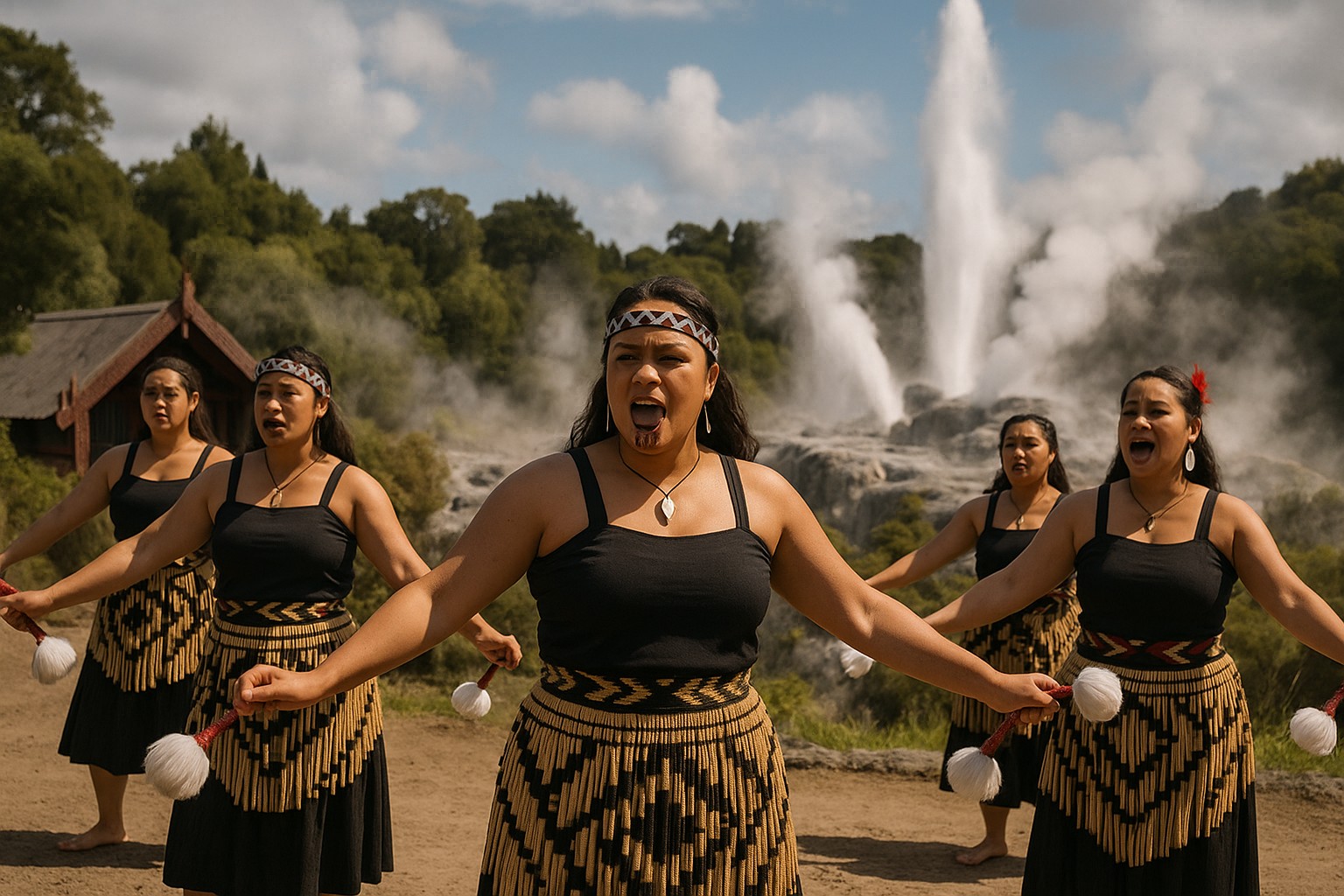Te Puia: Where Culture Meets Geothermal Power
Te Puia stands as the premier Māori cultural center in New Zealand, uniquely combining geothermal wonders with living cultural traditions. Here, the mighty Pohutu Geyser erupts against a backdrop of traditional performances, master craftspeople practice ancient arts, and the spirit of Māori culture thrives.
The New Zealand Māori Arts and Crafts Institute, based at Te Puia, preserves traditional skills that might otherwise be lost. Watch master carvers transform raw wood into intricate sculptures telling ancestral stories, their tools moving with practiced precision passed down through generations. Weavers work with harakeke (flax), creating stunning pieces using techniques perfected over centuries.
Daily cultural performances showcase the fierce beauty of the haka war dance, graceful poi performances, and powerful waiata (songs). The performances are not shows—they're expressions of identity, pride, and connection to ancestors. The Kiwi conservation center offers rare opportunities to see New Zealand's national bird, with breeding programs helping protect this endangered species.

Māori Village Experiences: Tamaki & Mitai
Tamaki Māori Village offers an award-winning evening journey into pre-European Māori life. As dusk falls, you're transported to a fortified village where traditions come alive. The evening begins with a pōwhiri (welcome ceremony)—a deeply moving protocol where hosts and guests formally acknowledge each other through call and response, establishing bonds of respect.
Interactive activities let you try your hand at traditional games, weapon handling, and poi swinging before the feast. The hangi—food cooked in an earth oven using geothermal heat—produces incredibly tender meats and vegetables with a distinctive smoky flavor unique to this cooking method. The evening climaxes with a powerful concert performance featuring the haka, action songs, and the beautiful haunting harmonies of traditional waiata.
Mitai Māori Village takes a different approach, set in native bush beside a geothermal stream. The experience begins dramatically with warriors arriving by traditional waka (canoe), paddling through the steam. After the hangi feast, guides lead small groups through a glowworm grotto—a magical bush walk under thousands of bioluminescent glowworms creating a starlit ceiling in the darkness. It's intimate, authentic, and family-friendly.

Whakarewarewa Living Village & Traditional Arts
Whakarewarewa—known as the Living Māori Village—is exactly that: a real community where Māori families have lived for over 200 years, their daily lives intertwined with geothermal activity. Village residents give tours, sharing personal stories of growing up bathing in hot pools, cooking in natural steam vents, and living harmoniously with the volatile geothermal landscape.
Watch demonstrations of traditional geothermal cooking—corn cobs lowered into steam vents emerge perfectly cooked minutes later, while hangi pits use the earth's heat for slow-cooking. The cultural performances here have special authenticity because they're performed by village residents in their own community, not actors playing roles.
For hands-on cultural immersion, workshops teach traditional Māori arts. Flax weaving (raranga) classes show how harakeke transforms into beautiful kete (baskets) and other items. Bone carving workshops let you create your own pendant under expert guidance, learning the symbolism behind traditional designs like the koru (unfurling fern) representing new life and the hei matau (fish hook) symbolizing prosperity and safe travel.
Cultural walking tours with local Māori guides explore historic pā (fortified village) sites, traditional food gathering areas, and places significant in Te Arawa tribal history. These small group experiences share legends, explain the deep spiritual connection to the land, and reveal how traditional ecological knowledge sustained Māori communities for centuries.